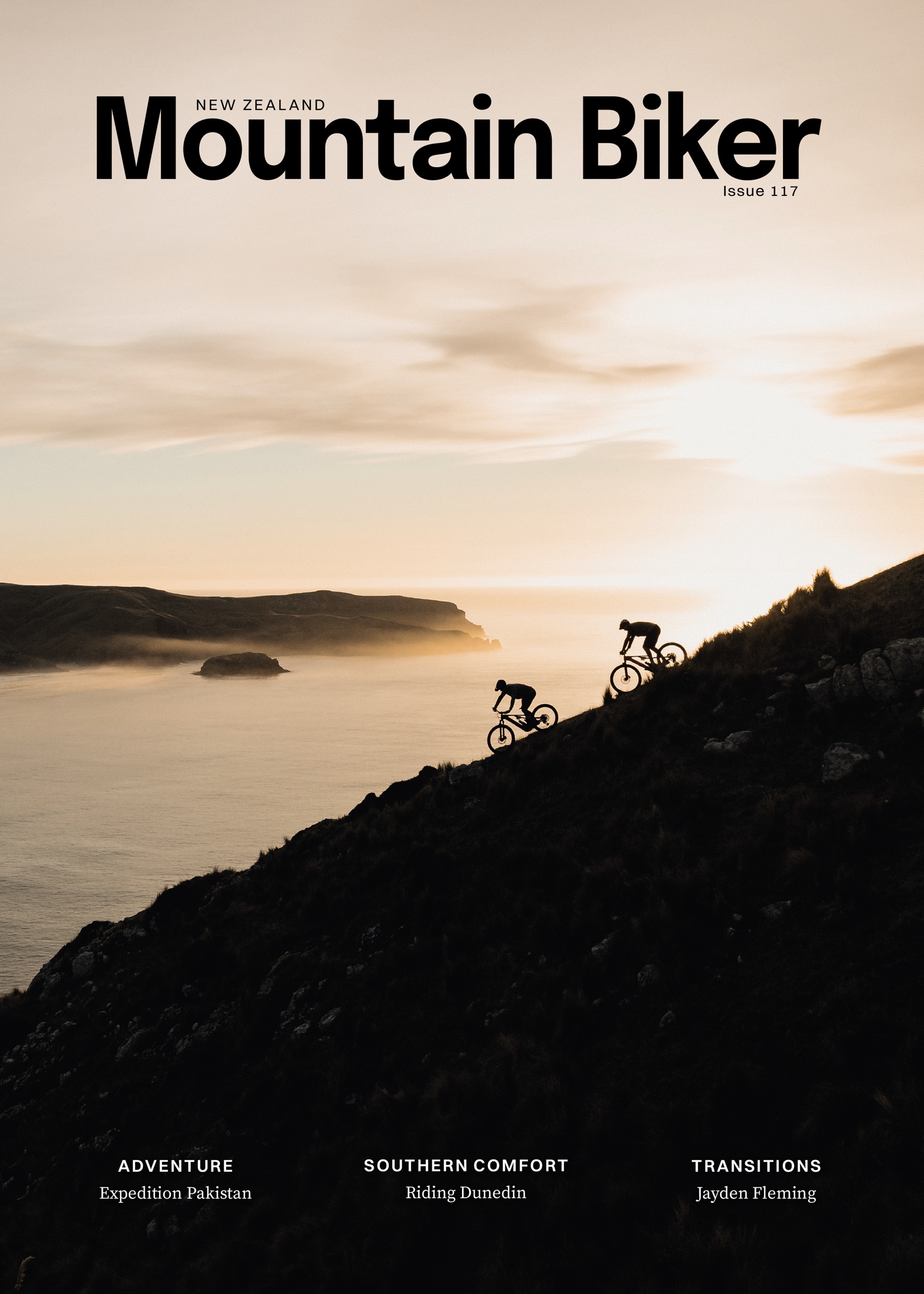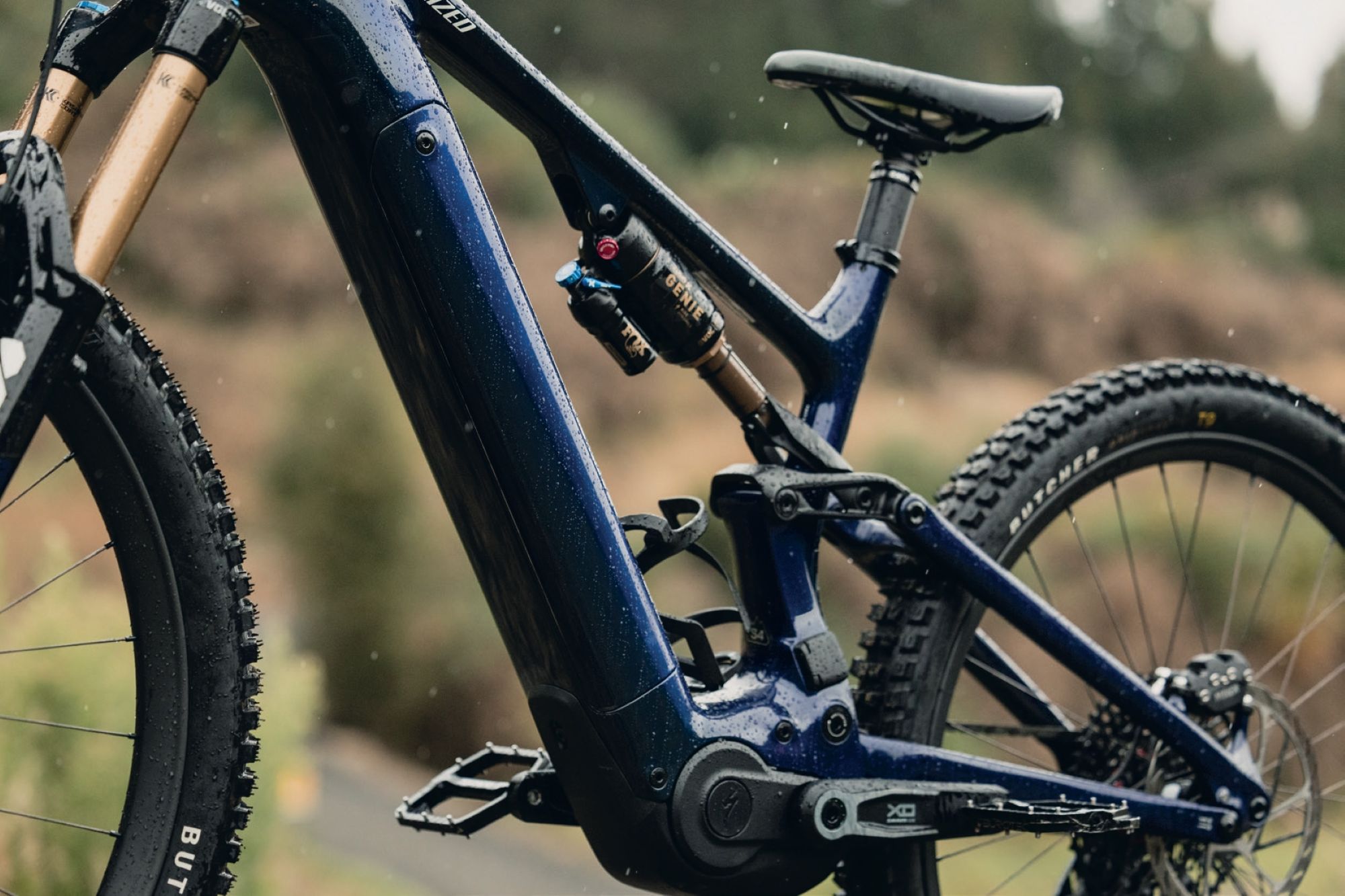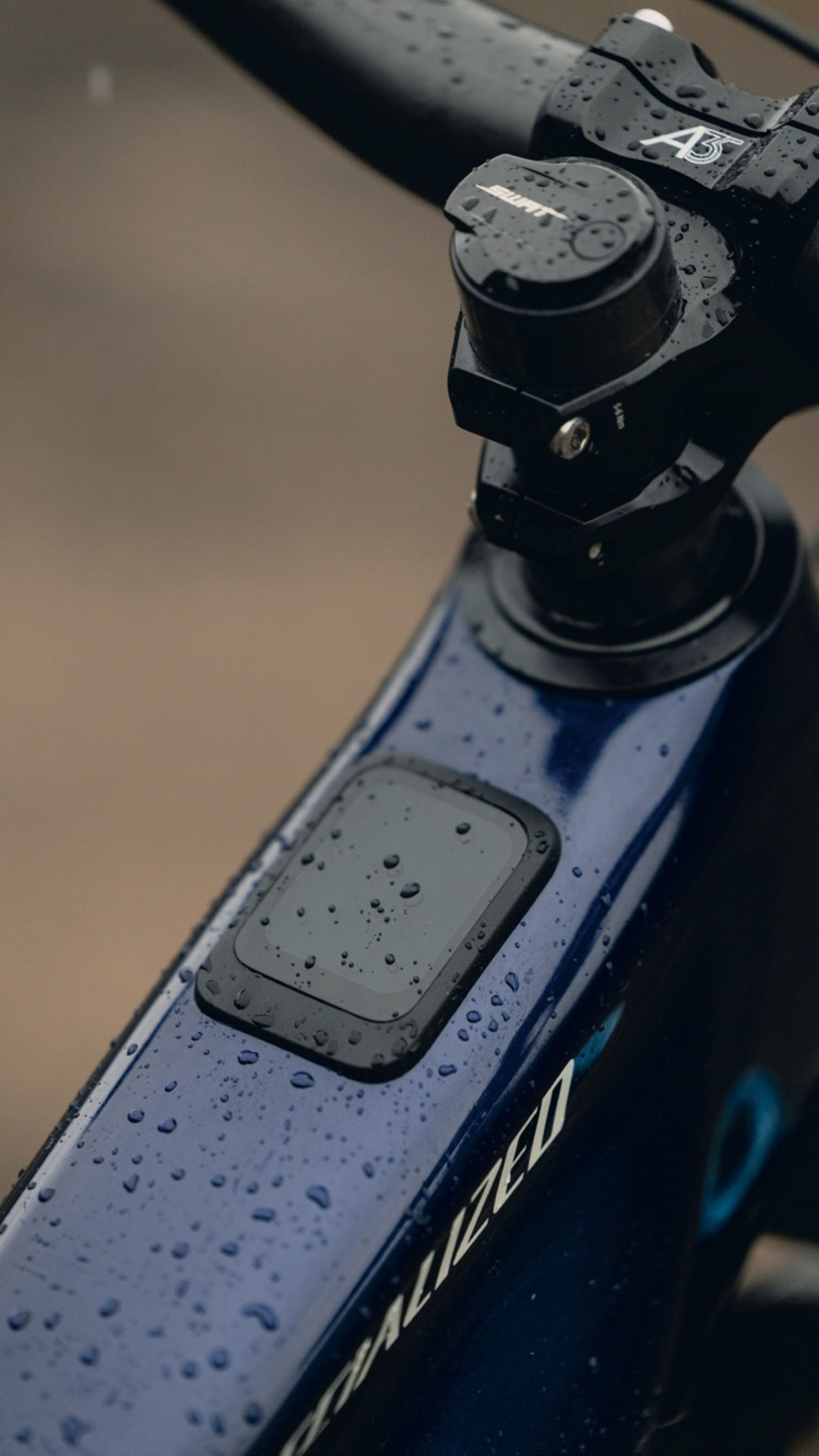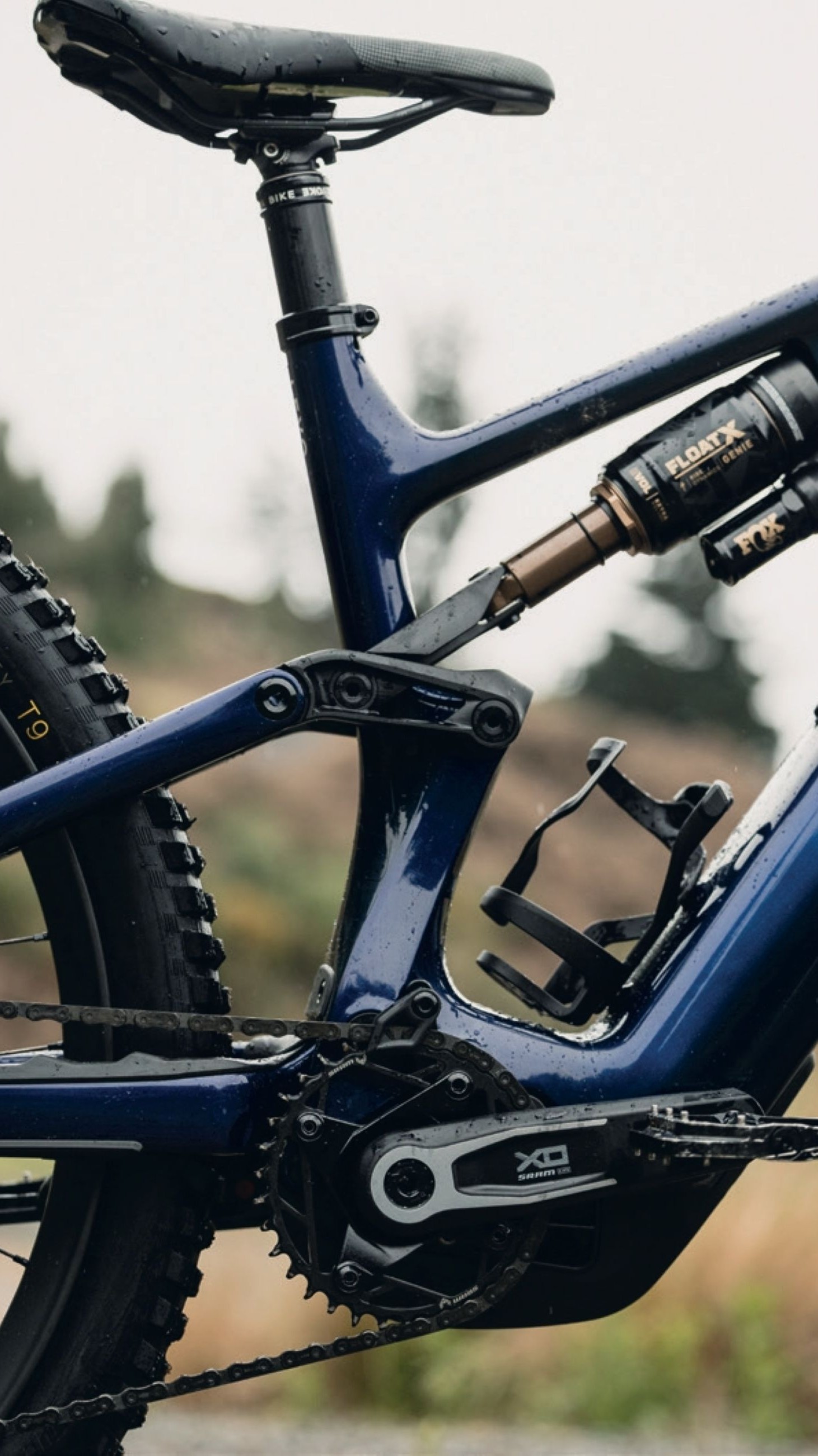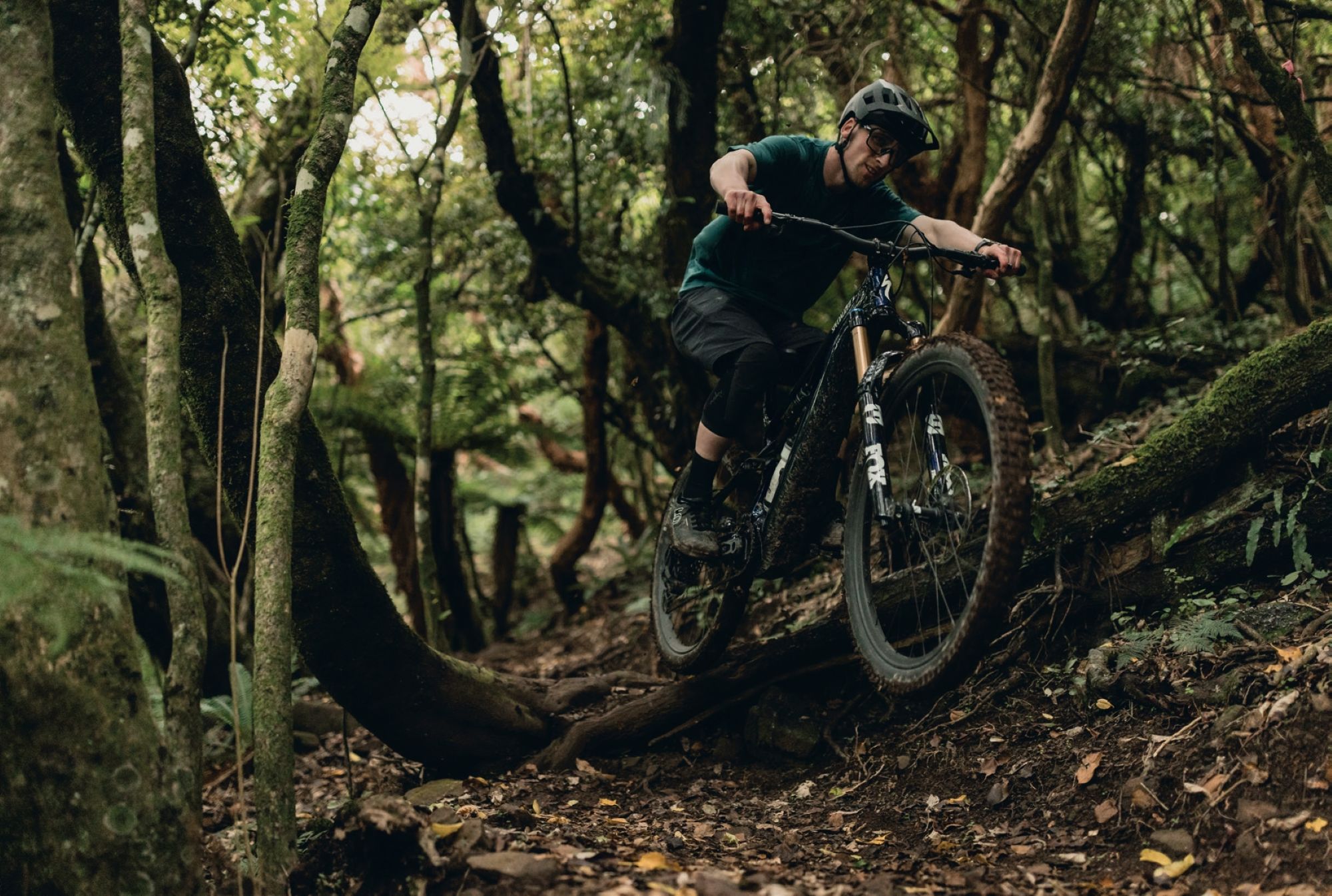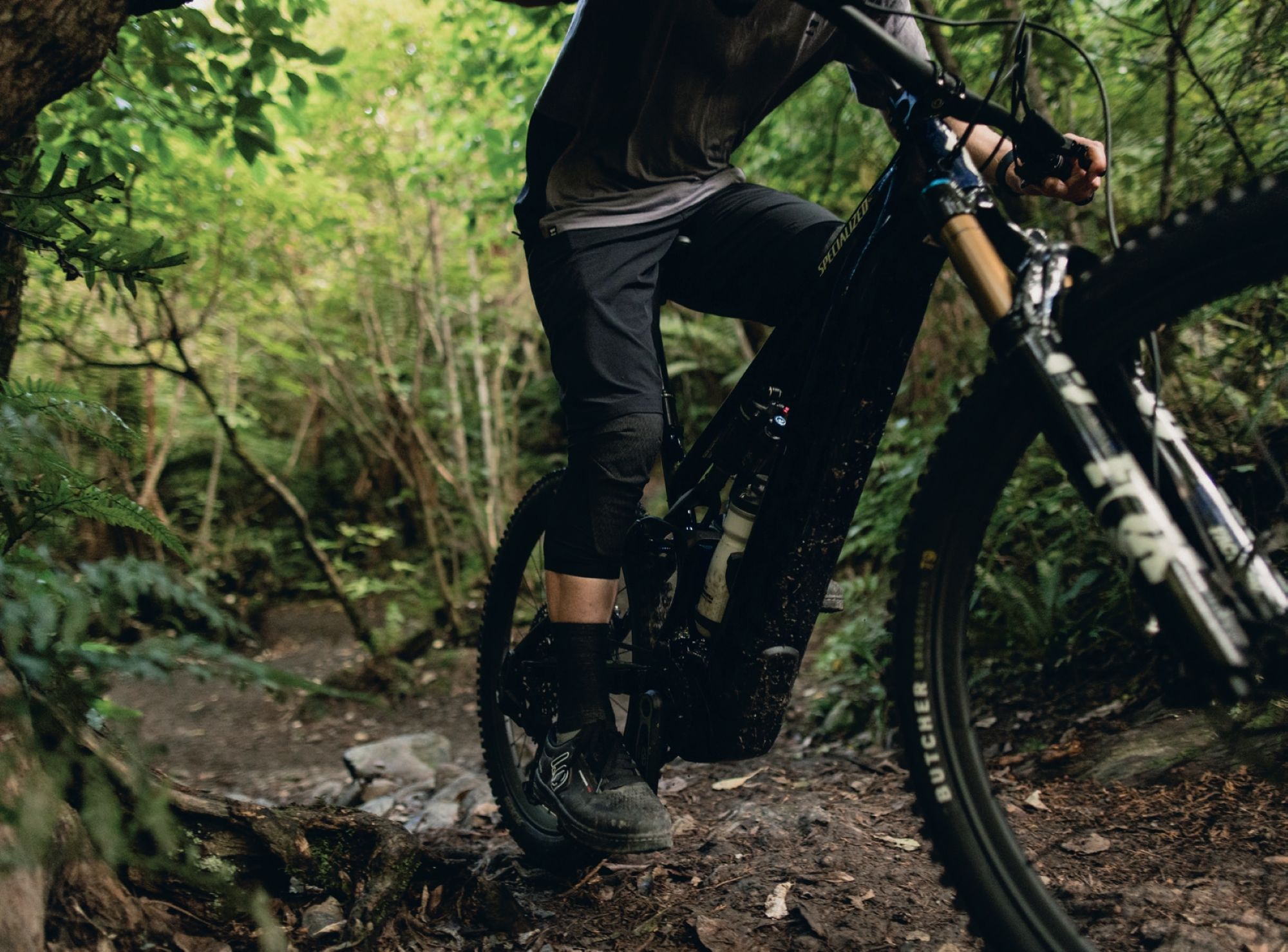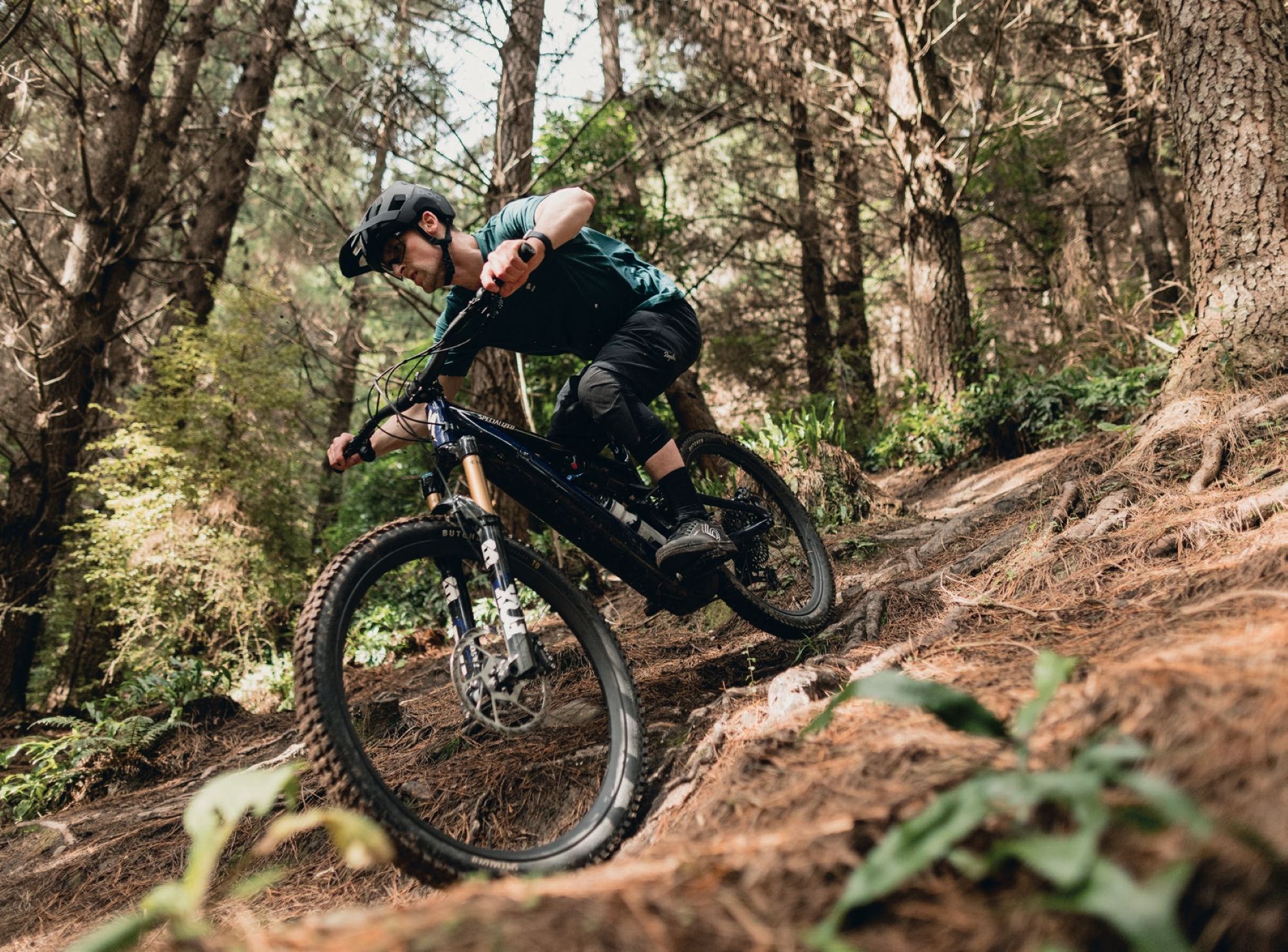Words Lester Perry
Images Cameron Mackenzie
RRP $19,900
Distributor Specialized NZ
Specialized’s eBike boffins have been at it again – this time with a revision of their marque Levo model. A 150/160mm travel trail bike, the Gen 4 builds on the Levo heritage and considers consumer feedback from riders who’ve previously Levo’d. They’ve ended up with a completely revised bike; almost every aspect has been refined, upgraded or tweaked. It’s evident that all the changes from Gen 3 have been considered and have a purpose; it’s not just change for the sake of it.
The design language is carried over from other recently released Specialized models; the Stumpjumper 15 and the Levo SL2 line. Levo Gen 4 has similar lines to the SL2, albeit with a beefier downtube and motor area, allowing for its larger, more powerful motor and larger battery. Most geometry numbers across the two bikes are within a gnat’s hair of each other. Thanks to this, I found the handling of the Gen 4 Levo very similar to the SL2 and, where characteristics differed, it was due to the extra weight of this full-powered bike. Geometry is comfortable and a great middle ground for all scenarios for a bike of this travel and intended trail use. The reach on an S4 size is 480mm, the head angle sits at 64.5 degrees, the seat tube at an acceptably steep 67 degrees, and 435mm chainstays in the stock short setting. As with the Levo SL line, there’s an adjustable head angle so, with a quick headset cup swap (only requiring an Allen key), the bike can gain or lose a degree of head angle—and flipping the hardware on the lower shock eye drops the bottom bracket -6mm from the stock high position of 350mm high. The rear end can grow by 9mm just by adjusting the chainstay flip chip, adding stability to the ride.
To keep the rear end short and put the lower suspension pivot in the optimal position, there’s no option (or clearance) to run a 29-inch rear wheel, so the bike is offered only in a mixed wheel (27.5/29”) format.
The new 3.1 motor breaks new ground for the Big S. Gone is the vulnerable, noisy internal belt, replaced by metal gears with a HardDrive coating offering increased durability and adding to the motor’s noticeably quieter running than the previous Levo. It sure is quiet – and even after it’s warm, after an hour of hard use, there’s no whining or increase in noise, just a gentle purr. Impressive.
Although it’s now 20% smaller overall, the motor hits 666W peak power across the range, with the baller S-Works edition punching up to 720W thanks to a different motor tune. Torque gets an increase, too, now 101nm with the S-Works getting 111nm. At higher cadences, where the previous Levo’s – and many other current motors – power delivery dropped off slightly, the Gen 4 maintains the peak power through a much higher cadence range.
A small but noticeable change in the width of the motor brings the Q-factor inwards 10mm; it is not massive, but it keeps the Q-factor closer to that of a standard pedal bike. For those who do a fair amount of pedalling and jump between the eBike and other rigs, it brings a more natural-feeling pedal stroke and, in some cases, should ease dodgy knees.
Battery capacity is boosted to 840Wh versus 700Wh on the previous generation Levo. A new internal battery cell layout allows for a shorter overall battery at a similar weight to the previous. A major but not noticeable change is the increase to a 48v system from 36v; apparently, this further increases the efficiency of the battery and electrics, allowing it to be more compact and extend the ride time.
The battery is now accessible from the non-drive side of the down tube; with a few rotations on a five millimetre Allen bolt, the battery door comes off. A gentle tug on a pull loop, and the battery simply slides out the side of the bike. Thanks to the shorter battery, there’s now a cavity up toward the headtube, allowing a SWAT bag to be tucked in place, held there by a magnet. There’s room to stash a tube, CO2, and Allen key in the watertight bag, which is handy.
A 600w/h battery is also available aftermarket, giving those who ride shorter times on the regular a lighter weight option. A 280w battery expander can be slid into the bottle cage in addition to the onboard 840w/h battery, offering a gargantuan 1120w/h for those who want to go on larger missions. Specialized claims an 80kg rider in Eco mode, climbing “significant elevation” could get 5.3 hours out of the system. I’d be happy to ride more aggressively, take it easy on Turbo assist, and get three rip-roaring hours out of the 1120w/h setup.
The new Mastermind controller has significant changes and upgrades from the previous version. The thumb shifter is wired to the screen tucked into the top tube, but both have had some welcome tweaks. The screen is much larger and now square, allowing for data that’s far more visible at a glance than the previous. The controller now has a power button at the top, a ‘toggle’ type lever in the middle, and a Walk Mode button beneath this. Pushing the toggle up or down scrolls the bike through its stock power modes, while pressing the toggle changes the data displayed. For those who want a bit of variation from the stock assistance levels, a long press ‘up’ on the toggle unlocks some fine-tuning options: Micro Tune and Dynamic Micro Tune. Micro Tune essentially lets you select the rider power amplify level in 10% increments, with equal bike input. Dynamic Micro tune is like Micro Tune, but enables you to choose assistance level for efficiency and battery saving while cruising, but automatically jumps back to 100% assistance when you kick up the power on the pedals, giving full assist for surprise pinch climbs or when you need some extra oomph while sprinting into a gap jump. These extra adjustments made possible by the new controller mean you can fine-tune the bike without requiring the phone app while riding—or even a phone at all if that’s your jam.
If you want even more tuning, the Specialized app has a couple of minor, but helpful, additions for the Gen 4 Levo. Overrun is a standard feature on many high-end eBike systems; the drive running on for a short period after you stop pedalling—this helps keep the bike moving forward, particularly when climbing technical trails where it’s necessary to stop pedalling over a trail feature so as not to clip a pedal or smash a crank, it also helps while climbing through high speed swooping turns, continuing to drive even when you need to stop pedalling for fear of bottoming a crank out while leaning into the turn. The ability to adjust how long the Overrun period is via the app (through Min, Default and Max) gives some interesting options for those trying to maintain maximum speed on rough, technical trails. It would be ideal for racing once you adapt your riding. I think it would take a bit more time to figure out what level is best and how to get the most out of the feature, so I was happy with the Default (middle) setting.
Cadence Coach is an interesting new feature that can be enabled in the app. When turned on, a rider can view their pedalling RPM on the Mastermind screen. As cadence changes, a circle around the RPM number changes colour and arrows appear, suggesting you should speed up or slow down your cadence to stay in the optimal zone. It’s an interesting feature for those with a history in cycling but likely a real eye-opener for those newer to the sport who are still figuring out ideal cadences. Provided a rider sits in the optimal cadence range, their battery will last longer, and power will be applied more efficiently. They’ll have to shift to the correct gear to keep their cadence ‘in the green’, minimising chain wear and saving the highest (smallest) cogs on what is a very expensive cassette.
The Specialized developed Genie Fox Float X2 takes care of rear suspension duties. The shock features standard metric 210mm x 55mm sizing, allowing for whatever aftermarket shock you would like to run, including a coil. I’m unsure why a change would be necessary, as I’m well impressed with the Genie’s performance on this bike and put time in on it during my SL2 review. It’s simple to set up and tune and has a coil- like feel. Suppleness early in the stroke helps maintain traction across all surfaces, but with enough support to still pop off and pump trail features. The bike I rode had the shock set up in its stock format but, like the SL2, I’d probably add a couple of bands into the main air spring to give a bit more support earlier in the stroke. Fox also takes care of the fork; a tried and proven Fox 38 Factory adorns the front of the bike – the perfect partner for the Genie shock, and stout enough to handle the weight of bike and rider.
Overall, the component choice is ideal for the bike, and I struggle to pick any holes. The SRAM XO Transmission drivetrain is the perfect choice for an eMTB. As stated previously, the Maven brakes are hard to beat. Dropper post duties are performed admirably by a Bike Yoke 170mm post. Handlebars are a wide Specialized option; they’re a 35mm clamp and, although the shape is comfy, I did find them harsh. Given more time with the bike, I would have swapped in a 31.8 stem and bar for comparison.
I have reservations about carbon wheels on eMTBs but, visually, these look like they’re probably up to the task. They’re plenty wide, and their 4mm thick beads should help ward off pinch flats and cracked rims. Being wrapped in the Gravity casing tyres should help, too. I guess time will tell.
Riding the Gen 4 Levo
I spent a solid couple of days putting the Gen 4 Levo through its paces and, although this gave a great window into the bike’s characteristics, it doesn’t give any idea of its longevity. My first day was on prime, dry trails in Christchurch’s Adventure Park and Vic Park. I made some minor air adjustments to suit my weight and riding style, sped up the rear end and slowed up the fork a couple of clicks. After this ride, I was happy I had a good baseline to start tweaking from. My second outing was in the Craigieburn range—firstly, a classic lap up the nice singletrack climb with some technical crux moves (no dabs!) to the Luge trail, followed by Dickson’s downhill. I dropped my fork and tyre pressure a fraction, then we were back down the road and up the gravel climb to Cheeseman’s trails for a lap of Cockayne Alley followed by Cuckoo Creek. Conditions were damp, and I was glad to have an eBike to quickly lap back up the climbs, spending minimal time outside the shelter of the tree canopy.
The more bikes I ride, the more I appreciate an easy setup; I just want to get on, adjust a couple of clicks here and there and go ride the damn thing. Granted, an eBike’s weight helps it feel better than a lousy setup or lower-end suspension may suggest, but there’s something to be said for a bike that just performs as it should without any significant effort put into setup.
Although I don’t imagine the Gen 4 is any lighter than an equivalent spec Gen 3 model, the bike doesn’t feel portly to ride, and the weight feels less on the trail than other equivalent-weight, full-powered eBikes I’ve ridden. It rides just like a similar trail bike but with more heft. I never felt that the bike had taken control, leaving me merely a passenger clinging to an overweight bike with luck choosing where it would go. I’ve been in this scenario on some bikes, and it’s a scary time.
The Gen 4’s geometry and suspension help keep things on line and in control. I found the bike to be stable and predictable over chunky rock sections, not getting deflected or pinged off-line. The bike inspired confidence when coming into steep chutes on trails I hadn’t ridden before. In a couple of these situations, I had to haul anchors to get my speed to a comfortable level; the SRAM Maven brakes highlight my thoughts that brakes can make or break an eBike riding experience. In this case, one of the most powerful brakes on the market, and massive rotors, are more than enough to bring the weighty combo of the bike and my weight to a stop in the steepest or sketchiest situations, even in the wet and on long descents.
During my two battery-draining rides, I cleaned some technical sections that were undoubtedly a stretch, and tested bike and rider to the limit. Thanks to the short 165mm cranks and the Run On mentioned above, I only bottomed out a crank once. Power is nothing if your back wheel is losing traction while climbing, and I was impressed that even on slick roots, clay or gravelly steep pinches the power in application is so smooth and consistent that it maintains traction longer than I expected—and no doubt longer than other bikes I’ve ridden in similar situations. I was impressed that even in Turbo mode, the power was applied so that it didn’t feel like it would tear my arms from their sockets, and there was no jerkiness or surprises. My whole experience with the motor, I’d term as ‘controlled’.
The Craigieburn Range trail conditions were less than ideal; heavy rain in the hours preceding our ride—and continual rain through the day— left puddles and standing water over anything flat, and descents were slipperier than ideal, with treacherous roots ready to claim anyone not 100% on the game. Bikes and riders were saturated, but the bikes didn’t skip a beat. If there were limits to the waterproofing on the bike or motor, we would have found them.
Specialized offers annual suspension pivot bearing replacement for the original owner’s lifetime. A great way to keep the bike performing at its best, particularly after a wet winter—although the tinfoil hat wearer in me thinks it may be a convenient way to get customers back into a Specialized shop more regularly. Judging by how little servicing my own bikes get, this is a good thing!
The bike’s balance was evident while flowing down some of Christchurch Adventure Park’s jump trails. It’s a predictable and confidence-inspiring bike to jump or even bunny hop. As with the Levo SL2, the Gen 4 rips turns; they’re easily initiated and the bike switches direction intuitively, no doubt a product of short chainstays, and the 27.5” rear wheel.
Fellow test rider, Nathan Petrie, had ridden this bike before I did and commented that the bike should have been specced with a 200mm dropper post, not the 170mm supplied. Nathan is a decent amount taller than me, and although a 200mm drop would be optimal for him, the 170mm drop was spot on for me. Sure, a 180mm drop would have worked for me, but that’s just splitting hairs. What would be ideal is a post with some travel adjustment, keeping everyone happy.
The Specialized Butcher Gravity T9 tyres specced on the bike I tested have been superseded since this bike was assembled. A newer version was recently launched but missed this production run. I’m glad to hear the bike will eventually come with the newer, better tyres as, although these were reasonable, they weren’t fantastic and did suffer in the wet. I’m positive there are better options out there that would perform well across a broader range of conditions. Word on the street is that the new Butcher is a decent step up from these, so hopefully, we’ll find them on production bikes soon.
Now, it’s no secret this bike will cost a buyer a decent wedge of cash and, taking that into account, is it worth all that money? Well, there are other bikes in the market at similar prices, but the few I have ridden didn’t offer the complete package we see here on the Levo Gen 4, from spec to setup to handling.
It’s no exaggeration to say this bike possesses the best overall handling and experience, beginning at setup, of any full-powered eBike I’ve ridden. My only questions regard longevity: outside of Specialized’s own internal—albeit extensive—testing, the new frame, motor, battery and controller are unproven over the long term.
